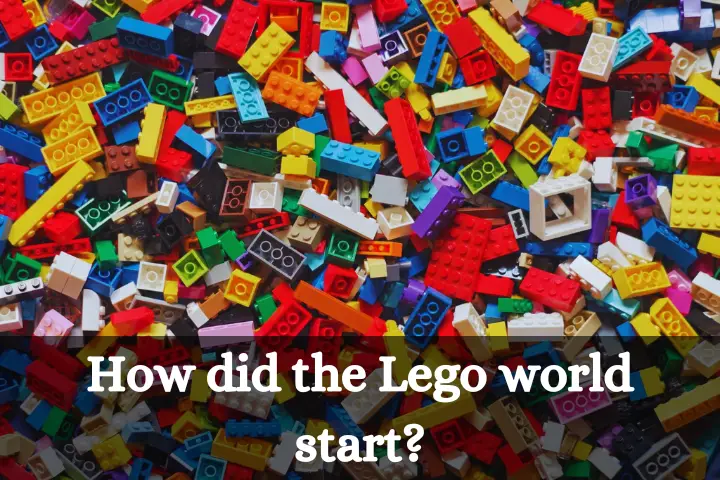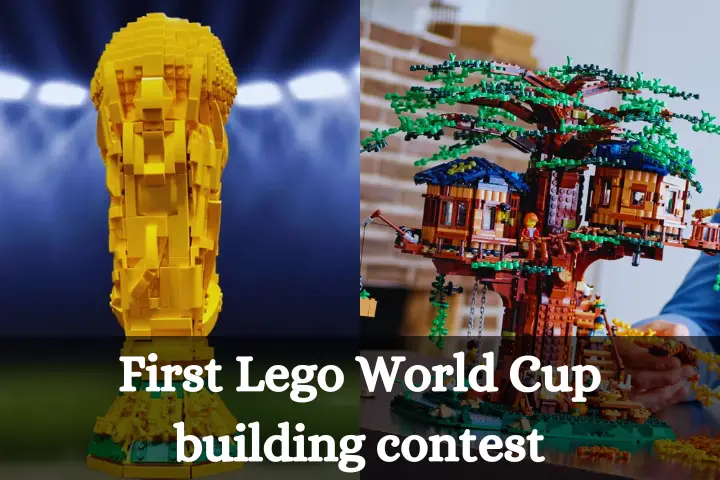Where are Legos made- First Lego set?
LEGOS are the most loved toys of children across the world. A LEGO set is used to build challenging toys and keeps the children engaged for hours.
Legos first came on the market in 1932, in the country Denmark ( village- Billund) by a Danish genius named Ole Kirk Christiansen.
The colorful block-shaped Lego bricks are available today at all the top toys stores.
How did the Lego world start?

Ole Kirk Christiansen was a Danish carpenter. In 1916, he opened a wooden workshop in the village of Billund. This wooden workshop would manufacture household furniture and would construct the wooden interior or exterior of buildings and later wooden toys were added to the list.
The business was doing good when in 1924, the shop was burned down. After that Christiansen would take only small projects and would first make miniature versions of the final product to the customers.
These miniatures inspired the Danish carpenter to jump into the business of wooden toys. So in 1932, the shop started manufacturing and selling wooden toys for the children. These wooden toys would include cars, trucks, and piggy banks. To minimize the waste, the clever founder would use the left-over yo-yo parts as wheels for the vehicle toys.
In 1934, Christiansen named his little wooden toy Lego taken from the Danish phrase and it means “Play well”. In Latin, the word Lego means, “ I assemble” or ” I put together”. The company was registered with the name Lego for the first time.
Lego Group Timeline
From there, there was no turning back for the Lego company. In 1934, when the company was started, it had only 6 employees, but in 1942 it hired 40 employees. The business incorporated the latest machinery and material of that time. The Lego Group became the first-ever company in Denmark to own a machine that would mold the plastic.
In 1947, the Lego Group further innovated its toys. It was when the founder of Lego Group discovered prototypes of a toy called, “Kiddicraft Self-Locking Building Bricks” coming from Britain. The group copied the idea and 2 years later, the company started manufacturing its version.
In 1954, Christiansen’s son, Godtfred, held the position of junior managing director of the Lego Group. The modern-day Lego design was introduced by the son of the Christiansen and got a patent for today’s LEGO stud-and-tube configuration. In 1958, the Lego company introduced roof bricks to the “LEGO System of Play”. This system consists of 28 sets and 8 vehicles.
After a detailed conversation with the overseas buyer, the idea of the Lego toy system took place. The junior managing director of the business expected a great potential in Lego bricks to become a system for modern innovative learn and play systems.
The plastic made with different colored Lego bricks had pegs on the top with hollow bottoms. This structure allows the kids to lock the bricks together and build detailed structures that were never possible before. However, these Lego bricks had no tubes inside them. Modern Lego bricks have tubes inside them which provide maximum stability while arranging them.
Introduction of modern Lego brick
In 1958, the design of the modern Lego brick was developed. It took almost five years for the admin of the Lego group to find the right material for the most functional Legos. ABS (acrylonitrile butadiene styrene) polymer was concluded to be the right one.
Though that time people were less reluctant to buy plastic toys. They would prefer wooden toys and the ABS polymer was a new thing for them. The design of the modern Lego brick was patented on 28 January 1958.
First Lego World Cup building contest

The first-ever Logo world cup took place in 1988, held in Billund. In this world cup, 38 children from 17 countries participated.
Lego Canada
In the same year, 1988, Lego Canada was formed. More innovations to the Lego toys were introduced, and the Lego line was extended. The Lego line was extended with the Lego Pirates theme. This included Lego pirate ships, islands, seas, and treasures. Lego space, Lego city, and Lego castle were further added to the extension list. Lego Minifigures were introduced in these extensions.
The Lego Group’s Educational Products Department
The Lego Group’s Educational Products Department was named Lego Dakta in the year 1989. Dakta is taken from the Greek language, the word is “didactic,” which means “the study of the learning process.” From the laboratory of Computer Learning, MIT’s Dr. Seymour Papert was titled as “Lego Professor of Learning Research,”.
This title was given to him due to his contributions in the Logo programming language with Lego products.
Introduction of Lego Minifigures
Till 1989, Lego Minifigures would come only in yellow-skin color and a smiling face. After this year, the variation of skin colors and facial expressions were added to the Lego Minifigures. The Lego Minifigures can also be decorated with beards, hairstyles, eye patches, eyelashes, sunglasses, lipstick, and different kinds of dresses and gadgets or weapons.
Popularity of Legos
The popularity of Lego is witnessed from its representation across the globe. Legos building bricks and Lego miniatures are used in multiple kinds of cultural works. These cultural works include books, films, and other artwork. The Legos are also used in the modern classroom as a teaching tool. Children learn better when taught with Lego systems.
Lego Education North America is a joint venture between Pitsco, Inc. and the educational division of the Lego Group in the United States of America. Today there are many Lego parks and Lego Cities for the entertainment of children and parents.
Conclusion
The Danish carpenter Ole Kirk Christiansen, while making household furniture, never knew that the miniatures he developed would let him end up in manufacturing toys. Initially, his little wooden toys were named Lego, and in 1934 the Lego Company started. Throughout these years the most loved colorful Legos were innovated to what we play today.

I am a Product researcher, blogger, freelancer, gamer, and book reader, I like to make helpful blogs for the readers, and I love my work. I am very good at my work, and I can find information on products to help my reader.

